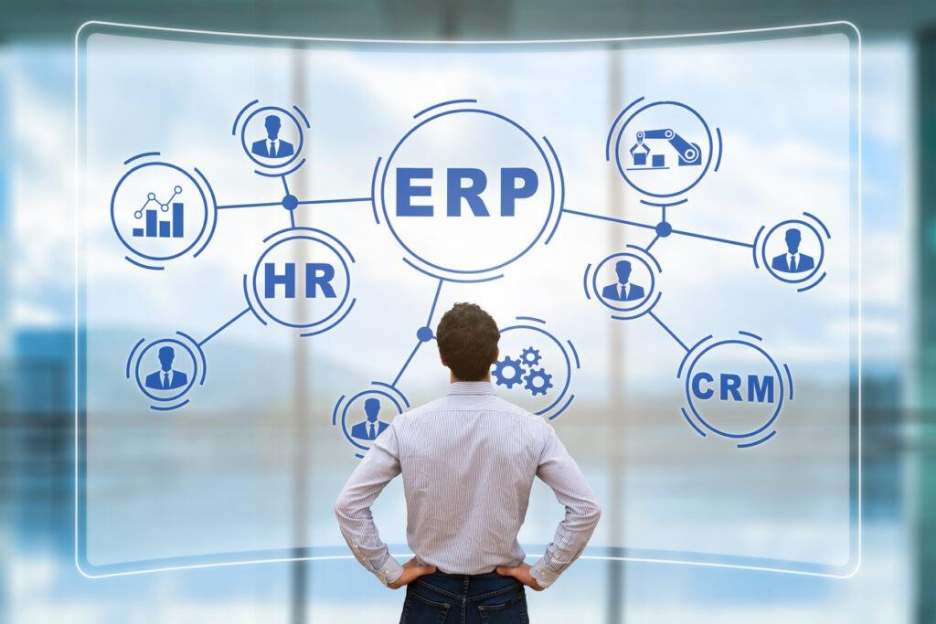
Enterprise Resource Planning (ERP) is more than just software; it's a strategic tool that integrates various business functions into a unified system. By centralizing data and automating processes, ERP empowers companies to make data-driven decisions, streamline operations, and respond swiftly to market changes.

Unlike stand-alone systems, an ERP offers real-time insights across departments, from finance to supply chain, ensuring that everyone works with the same, accurate information. This ERP integration not only reduces inefficiencies but also fosters collaboration, positioning businesses to scale effectively and stay competitive in a rapidly shifting environment.
This blog decodes the ERP integration mechanism, providing an overview of different types of ERP systems, benefits, challenges, and integration capabilities of different ERP solutions. Lastly, this blog throws light on ERP integration with supply chain mobile solutions and the role played by such solutions in transforming the supply chain landscape.
Embarking on an ERP integration can feel like navigating a complex maze, where every twist presents a new challenge or decision to make. Despite its widespread adoption, ERP integration still raises a host of questions for both newcomers and experienced professionals. Let's explore how the benefits of ERP integration can be applied to real-world business scenarios.
ERP integration connects and harmonizes your ERP system with other business applications, forming a cohesive and powerful digital ecosystem. This setup ensures smooth data exchange and communication across different departments, boosting efficiency and offering a comprehensive view of your operations.
As the digital backbone of your organization, a successful ERP integration can significantly enhance your operational efficiency, improve data precision, and provide a substantial competitive advantage.
Imagine ERP integration as upgrading to a modern all-in-one device. This advanced device, representing your new ERP solution, takes the place of your outdated tools, such as those old Excel spreadsheets.
Previously, managing tasks meant juggling a separate music player (or your accounting software), a calculator (or your CRM platform), and a camera (or your inventory management tool) – each functioning independently.
But now, with this cutting-edge device, all these tools—and additional features—are unified in one platform through ERP integration. This unification brings all your resources and data together in one easily accessible spot, delivering a streamlined and efficient experience.
ERP integration connects your existing operational systems with your ERP software, centralizing data and automating processes for deeper insights into business operations and supply chains. This upgrade enhances data security, eliminates silos, and provides real-time analytics through live dashboards.
While integrating ERP can be costly and challenging, successful ERP integration can drive significant growth and opportunity. By choosing the right ERP and integrating it effectively, you simplify your software footprint and gain a unified, accurate view of critical business information, as shown by Oracle’s findings that AI-enhanced ERP can significantly reduce errors and improve efficiency.
There are several types of ERP integrations depending on system deployment preferences, such as:
A brief overview of each ERP integration type is outlined below:
This type of ERP integration is installed locally on your company’s servers and managed by your IT staff. On-premises ERPs offer greater control over your data, and in turn ensure high-level ERP compliance, apart from providing flexibility for customization. However, they require significant upfront investment and ongoing maintenance.
A cloud-based ERP integration is hosted on the vendor’s servers and accessed through the internet. This type of ERP integration offers scalability, lowers upfront costs, and provides automatic updates, making it a popular choice for businesses of all sizes.
Hybrid ERPs combine elements of both on-premises and cloud-based ERP integration, allowing you to maintain certain processes on-site while leveraging the flexibility and cost savings of the cloud. This approach offers a balanced solution for businesses with specific needs or legacy systems in place.
These ERP integration systems are tailored to meet the unique requirements of a few specific industries, such as manufacturing, retail, and healthcare. Industry-specific ERP integration offers pre-configured modules and features that align with industry best practices, reducing the need for extensive customization.
You can decide which type of ERP integration is most suitable for your organization based on requirements such as size, number of users, and infrastructure.
Integrating ERP systems with your in-house applications and processes brings substantial benefits that include:
While ERP integration offers significant benefits, it also presents challenges due to the complexity of the process:
Once these challenges in ERP integration are understood and managed, businesses are better positioned to succeed with ERP integration.
There are several variants to ERP integration, each with specific advantages as follows:
Every approach has its pros and cons and should match business size, complexity, and requirements for optimal ERP integration results.
Having reviewed ERP integration variants, let’s focus on the integration capabilities provided by leading packages:
SAP ERP integration enables businesses to unify digital ecosystems and improve operational efficiency. SAP offers pre-built connectors, APIs, and middleware (SAP Integration Suite) for seamless ERP integration with platforms like CRM, e-commerce, and supply chain management.
In this type of integration, Oracle’s ERP connects with various business systems, supporting seamless data exchange. Oracle Integration Cloud provides adapters and workflow tools for streamlined ERP integration with CRM, HCM, and SCM systems, powering real-time insights and process optimization.
Mobile-friendly ERP integration is essential for asset-intensive industries—integrating with supply chain and plant maintenance solutions ensures remote field teams can process transactions from mobile devices, anywhere, anytime.
Integrating SAP and Oracle ERP systems with mobile SCM solutions transforms business operations by enhancing real-time data accessibility and operational efficiency. This level of ERP integration enables:
Enterprise mobility solutions integrate seamlessly with ERP systems, ensuring a cohesive, digital infrastructure for remote and on-site teams.
Propel Apps, a digital supply chain transformation company, has developed various mobile ERP solutions including inventory management, asset maintenance, digital forms, IIOT and safety management. These solutions offer excellent ERP integration, while providing the highest levels of flexibility and automation. If you are planning to empower your frontline teams with mobile ERP solutions that can seamlessly integrate with your in-house ERP systems, such as SAP or Oracle, please talk to us today.
ERP integration is a vital part of modern business operations, unlocking the full potential of ERP systems by creating a unified, efficient, and scalable digital infrastructure. Whether it involves SAP, Oracle, or any other platform, the key to success is selecting the right ERP integration strategy, managing challenges, and focusing on long-term value. With effective ERP integration, you streamline processes, improve data accuracy, and position your business for sustained growth and operational excellence.